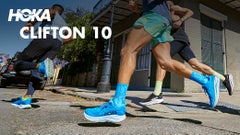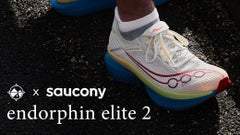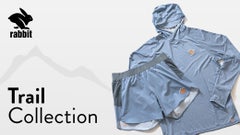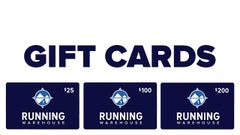How to Pick the Best Running Jacket for the Rain
Updated: October 1, 2024 by Caroline Cross
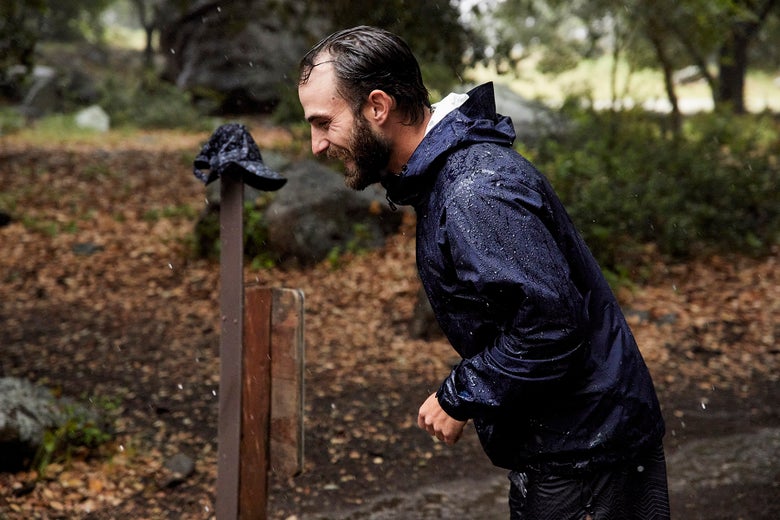
Whether training for a big event or trying to remain consistent with your daily exercise routine, you shouldn't allow the rain to slow you down or derail your progress. Besides, running in the rain can be a fun, exhilarating experience with many added benefits, as long as you have the essential rain gear for maintaining optimal performance.
To avoid getting soaked when running in wet weather, a water-resistant or waterproof jacket is just what you need to keep your upper body dry and comfortable throughout your workout. Read on to discover what type of jacket works best in diverse wet weather conditions and the features to look for to help you remain safe and protected, no matter the elements.
Factors to Consider
Waterproof vs. Water-Resistant
The main difference between waterproof and water-resistant jackets is how long each type keeps water out. Waterproof jackets usually have taped seams to prevent water from seeping in and will never allow pouring rain to penetrate the jacket's outer shell. On the other hand, water-resistant jackets allow some moisture in after prolonged exposure to precipitation. As a general guideline, you can expect most water-resistant jackets to keep you dry for about 35 to 45 minutes, making them ideal for runs that are less than an hour.
In addition to the duration of rain showers and your training time, temperature is another factor to consider when deciding between waterproof and water-resistant jackets. Water-resistant jackets work best in slightly milder weather and light rain. Typically, when it's between 50 and 60 degrees (10 to 15 C), you will need a lightweight, water-resistant jacket for adequate coverage on shorter runs, and a waterproof jacket for runs longer than an hour. However, if the temperature drops below 50 degrees, we recommend wearing a waterproof jacket with a warm layer, or with built-in insulation if the temps get close to freezing.
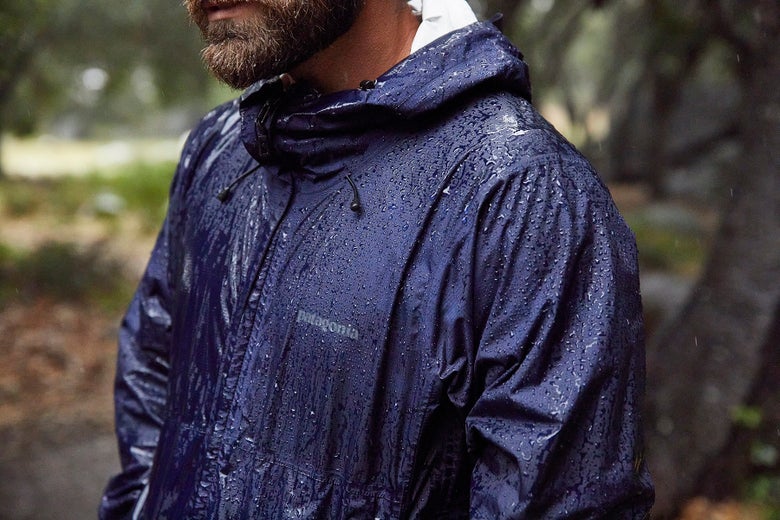
Breathability
Finding the right balance between breathability and protection is always a challenge. The ideal rain-ready running jacket must keep water out while allowing body heat and sweat to escape, which is not an easy feat. A jacket that doesn't breathe well may cause you to overheat and feel clammy, even on a cold day. Since maintaining a comfortable body temperature is vital to running success, a quality, breathable running jacket will reduce perspiration buildup on your skin, keeping you dry, comfortable, and chafe-free on your run. Some running jackets will even feature design elements such as a draft flap, armpit zippers, and adjustable cords at the bottom to help regulate ventilation and airflow.
Although they may not keep all the water droplets from seeping in, water-resistant jackets are usually ultra-light and are the most breathable option. This makes them ideal for those whose bodies typically run hotter or those running in milder temperatures.
Conversely, while waterproof jackets deliver on their promise of never allowing water in, protection like this comes at a cost to breathability. But this is where GORE-TEX comes in. GORE-TEX products are designed to be as light as possible while delivering distinguished waterproof technology with the best breathable materials. To guarantee complete waterproof and windproof protection, the zippers on these running jackets have an extra treatment on the exterior to form a complete seal.
Price
Not only are water-resistant jackets more breathable, but they're also less expensive than their waterproof counterparts. Because of their more practical design with fewer technologies, water-resistant running jackets generally cost less than waterproof jackets, making them an ideal option if you naturally run hot or plan to run in the rain for less than 45 minutes.
Since the best waterproof running jackets will keep you dry and comfortable indefinitely, their higher price point is justified. These performance jackets will generally start at about $140, and the price goes up with advanced technologies and added features (more on this below).
| Waterproof | Water-resistant | |
|---|---|---|
| Length of Time | Indefinite | Up to an hour |
| Breathability | Good | Better |
| Price | Higher | Lower |
Visibility and Reflectivity
Visibility can be greatly impaired during rainy conditions, both for passing motorists and runners trying to forge ahead amidst heavy downpours. Several running jackets feature reflective elements or 360 reflectivity for enhanced safety to ensure you are seen from all angles. In addition, wearing bright or high-visibility colors will help you further stand out in low-light conditions, especially in early morning and evening runs.
For maximum visibility, wearing additional high-visibility accessories in wet weather helps keep you safe. On your extended runs, we recommend using headlamps (which last longer) or carrying compact clip-on lights on shorter runs. For further information, check out our Running Light Buying Guide to help you find the best illumination gear for your training.
Additional Features
Running jackets built for the rain have additional features that enhance their functionality, such as hood options for added protection, pockets for storing essentials, and packability for convenience.
A hooded jacket allows you to be ready and equipped at all times in case of unexpected rain showers. An ergonomic hood with an integrated visor or fitted brim will help keep the water off your face. If you want a double layer of protection in wet and windy conditions, try wearing a running hat underneath your hoodie. Most hoods are adjustable with a cinch cord at the back to allow you to dial in the fit. Some hoods are detachable or can be rolled up and stowed in the collar, making them handy during intermittent weather when the skies clear up.
When it comes to ensuring a hands-free run in the rain, having a jacket with ample storage is another nice feature. Look for running jackets with secure, functional pockets to keep your phone and other gear dry and protected while enabling quick access to your essentials (such as nutrition and gels).
Lastly, packability in a rain jacket is especially helpful in unpredictable weather. If the storm passes or if your run really starts to heat up, packable jackets can be stowed inside their built-in pockets (either on the chest or the hood). Use our filter "packable" when exploring our selection of men's and women's running jackets.

Which Jacket Is Best for You?
Ultimately, finding the right rain jacket will depend on a few key factors. Your answers to these three questions will determine which jacket will be best for you:
- How long will you usually run in the rain?
- What will the temperature be like?
- How much will it rain?
When It's Warm and Raining
When the temperature is above 68 degrees (20 C), you likely won't need to wear a running jacket, as your core body temperature rises when you break a sweat. For those who want an extra layer, we suggest zipping into a running vest for added coverage. Due to their sleeveless construction, vests provide airflow and breathability while delivering comfort and protection from the elements.
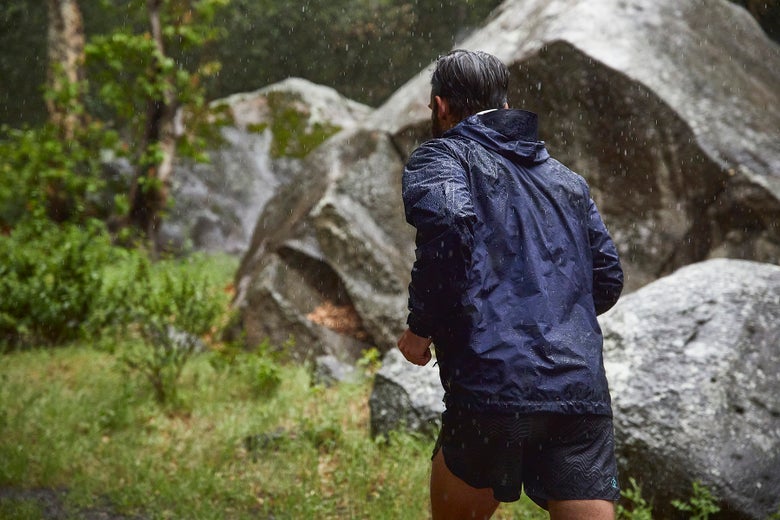
Running for Less Than One Hour in Steady Rain
If you're running for less than an hour, the temperature is the most important deciding factor on what type of jacket to zip into. A water-resistant jacket will be more breathable than a waterproof jacket, so if it's between 50 and 60 degrees (10 to 15 C), you'll be better off in a water-resistant layer to keep you comfortable and prevent overheating. Once the temperature drops below 50 degrees (10 C), you might want to wear a waterproof jacket over a lighter layer of clothing or a water-resistant jacket over a warmer layer for optimal protection and insulation.

Running for More Than One Hour in Steady Rain
On runs lasting more than an hour in steady wet weather, we advise wearing a waterproof jacket to prevent water soaking through your layers. A great moisture-wicking base layer (men's | women's) will help prevent that damp and clammy feeling, and a waterproof jacket using GORE-TEX will help increase breathability while keeping you fully dry. Although you may feel wet under the jacket, it will be due to sweat, not rain, and you won't experience a chill from the cold water.

Running in Intermittent Rain
When it might rain for part of your run, your jacket choice largely depends on whether or not the sun will come out. As long it's only raining for a short duration, say 20 minutes or less interspersed with sunshine, then go with a water-resistant jacket. The periods of sunshine will allow the jacket to dry enough to keep the water out, making it the perfect option for breathability and moisture-wicking capability. However, if it will be a dreary day and you plan to run longer than an hour, zip into a waterproof jacket to keep your core dry. Additionally, a packable waterproof jacket is ideal in this scenario, preventing you from getting drenched in heavy downpours while being compact enough to pack away once the rainstorm has passed.
Top Tips for Picking the Perfect Jacket for Running in the Rain
• The main factors to consider when deciding between waterproof and water-resistant jackets are temperature, distance, and the amount of precipitation.
• A water-resistant jacket is a suitable alternative for the runner needing lighter performance at a lower price point during shorter runs in drizzles, light rain, or mildly cool weather.
• A waterproof jacket ensures that no amount of pouring rain can penetrate the jacket's membrane regardless of the duration of your run, making it a great option on extended runs in steady rain and heavy downpours.
• The main features to look for when choosing a running jacket are weight, breathability, visibility, and packability.



